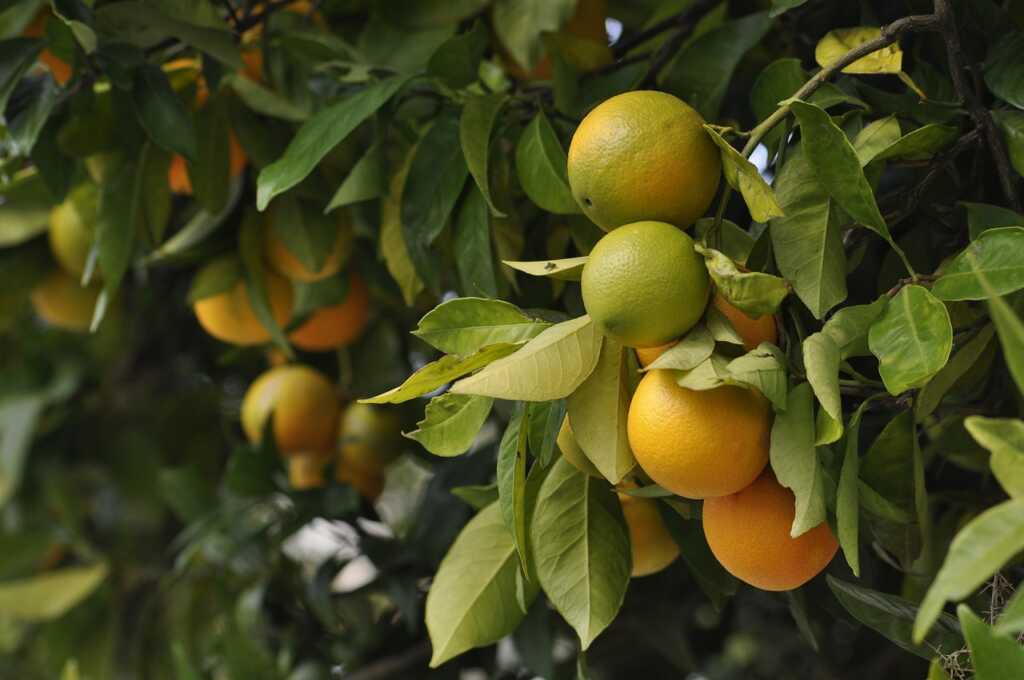
Growing citrus in pots or containers is an excellent option for those who love fresh fruits but lack garden space. With proper care and attention, you can successfully cultivate various citrus varieties right on your patio, balcony, or even indoors. This comprehensive guide will walk you through everything you need to know to grow healthy and fruitful citrus trees in containers.
Soil
Citrus trees thrive in well-draining, slightly acidic soil. Prepare a potting mix suitable for citrus by combining the following:
- Potting Soil: Use a high-quality potting soil as the base of your mix.
- Perlite or Vermiculite: Add perlite or vermiculite to improve drainage and aeration.
- Organic Matter: Incorporate compost or well-rotted manure to enrich the soil with nutrients.
- Peat Moss or Coconut Coir: These materials help retain moisture without becoming waterlogged.
Mix the components in equal parts to create a balanced potting mix for your citrus tree.
Sun
Proper placement is crucial for the health and productivity of your citrus tree. Follow these guidelines for optimal sunlight exposure:
- Sunlight: Citrus trees thrive in full sun, receiving at least 6-8 hours of direct sunlight per day. Place your container in a sunny location, such as a south-facing patio or balcony.
- Temperature: Citrus trees are sensitive to frost and cold temperatures. During the growing season, ensure the tree is protected from chilly winds and sudden temperature drops. Consider moving the container indoors or providing frost protection during winter months.
Watering
Proper watering is essential for the health and vigor of citrus trees. Follow these guidelines to maintain optimal soil moisture:
- Watering Frequency: Water your citrus tree deeply but infrequently, allowing the top inch of soil to dry out between waterings. Avoid overwatering, as citrus trees are susceptible to root rot in waterlogged conditions.
- Watering Technique: Use a watering can or hose with a gentle spray attachment to water the tree at the base, ensuring the water reaches the root zone. Avoid wetting the foliage to prevent fungal diseases.
- Moisture Monitoring: Check the soil moisture regularly by inserting your finger into the soil. If it feels dry beyond the top inch, it’s time to water. Adjust the watering frequency based on environmental conditions and the moisture retention properties of your potting mix.
Fertilization
Citrus trees are heavy feeders and require regular fertilization to support healthy growth and fruit production. Follow these fertilization guidelines for container-grown citrus:
- Timing: Fertilize your citrus tree during the growing season, from spring to early fall, when the tree is actively growing and producing fruit.
- Fertilizer Type: Use a balanced citrus fertilizer formulated specifically for citrus trees. Look for fertilizers with a higher nitrogen content for vigorous growth and balanced levels of phosphorus and potassium for fruit development.
- Application Rate: Apply fertilizer according to the manufacturer’s instructions, typically every 4-6 weeks during the growing season. Avoid excessive fertilization, as it can lead to nutrient imbalances and salt buildup in the soil.
- Application Method: Scatter the fertilizer evenly around the base of the tree, extending beyond the drip line. Water thoroughly after fertilizing to distribute the nutrients to the root zone.
Pruning
Regular pruning helps maintain the shape, size, and productivity of citrus trees grown in containers. Follow these pruning guidelines:
- Deadwood Removal: Prune away dead, diseased, or damaged branches as soon as you notice them. Use clean, sharp pruning shears to make clean cuts and prevent the spread of diseases.
- Thinning: Thin out crowded branches to improve airflow and light penetration within the canopy. Remove crossing or rubbing branches to prevent wounds and improve overall tree health.
- Size Control: Prune back overly vigorous or leggy growth to maintain a compact and manageable size for container growing. Aim to create an open, balanced canopy that allows sunlight to reach all parts of the tree.
- Training: Train young citrus trees by selectively pruning and shaping them to encourage a strong central leader and well-spaced lateral branches. This helps develop a sturdy framework for future growth and fruit production.
Pest and Disease Management
Citrus trees are susceptible to various pests and diseases, but with proper care and vigilance, you can minimize the risk of infestations and infections. Here are some tips for pest and disease management:
- Monitoring: Regularly inspect your citrus tree for signs of pest activity, such as yellowing leaves, distorted growth, or the presence of insects. Check the undersides of leaves and along the stems for pests like aphids, scale insects, and mites.
- Natural Predators: Encourage beneficial insects, such as ladybugs and lacewings, to control pest populations naturally. Avoid using broad-spectrum insecticides that can harm beneficial insects and disrupt the ecosystem.
- Cultural Practices: Practice good sanitation by removing fallen leaves and debris from around the base of the tree to eliminate hiding places for pests and disease pathogens. Prune out heavily infested or diseased branches to prevent the spread of pests and infections.
- Organic Remedies: Use organic pest control methods, such as neem oil, insecticidal soap, or horticultural oil, to target specific pests while minimizing harm to beneficial insects and the environment.
Harvesting
The ultimate reward of growing citrus in containers is harvesting and enjoying your homegrown fruits. Follow these tips for harvesting and savoring the flavors of your citrus harvest:
- Harvesting Time: Citrus fruits ripen at different times depending on the variety and climate. Monitor the color and size of the fruits, as well as their firmness and aroma, to determine when they’re ready for harvest. Most citrus fruits can be left on the tree to ripen fully before picking.
- Harvesting Technique: Use pruning shears or scissors to harvest citrus fruits, leaving a short stem attached to the fruit. Avoid pulling or twisting the fruits, as this can damage the branches and affect future fruit production.
- Storage: Store freshly harvested citrus fruits at room temperature for up to a week, or refrigerate them for longer shelf life. Citrus fruits can also be juiced or preserved for later use in recipes, drinks, and desserts.
- Culinary Uses: Explore the diverse culinary uses of citrus fruits, from refreshing salads and marinades to zesty desserts and cocktails. Experiment with different citrus varieties to discover unique flavor profiles and culinary combinations.
Growing citrus in pots or containers is a rewarding and enjoyable experience that allows you to enjoy fresh fruits right at your doorstep. By following the guidelines outlined in this comprehensive guide, you can successfully cultivate healthy and productive citrus trees in containers, regardless of your gardening experience or available space. With proper care and attention, your container-grown citrus trees will thrive and provide you with a bountiful harvest of flavorful fruits for years to come.
Selecting your Pot
Choose a container that provides ample space for root growth while allowing for proper drainage. Opt for pots or containers with the following features:
- Size: Select a container that is at least 18-24 inches in diameter and depth to accommodate the root system of your citrus tree.
- Material: Porous materials like terracotta or ceramic allow for better aeration and moisture regulation. Ensure the container has drainage holes at the bottom to prevent waterlogging.
- Mobility: Consider the weight of the container when filled with soil and water. Choose containers with built-in casters for easy mobility, especially if you plan to move your citrus tree indoors during colder months.
Common Citrus Types
Choosing the Right Citrus Varieties: When selecting citrus varieties for container growing, consider factors such as space, climate, and personal preference. Some popular options for container cultivation include:
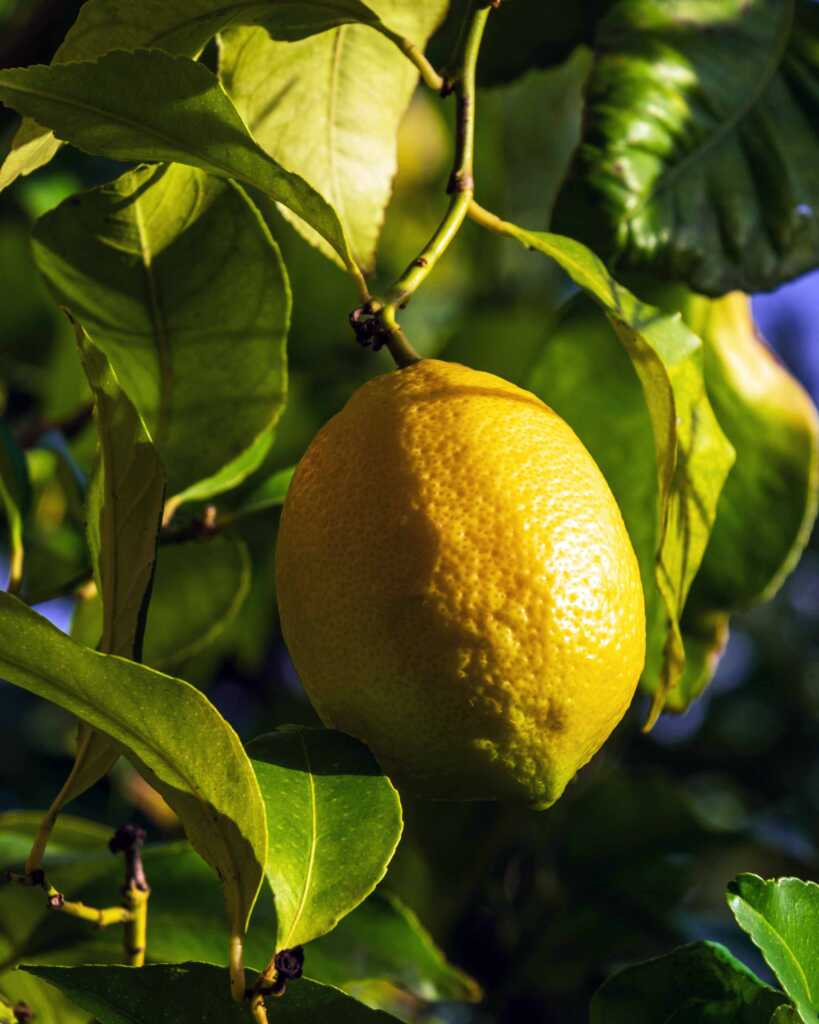
Meyer Lemon Tree
Meyer Lemon (Citrus × meyeri): Known for its sweet-tart flavor and thin, fragrant skin, Meyer lemon is a favorite among home growers. It’s compact in size and well-suited for container growing.
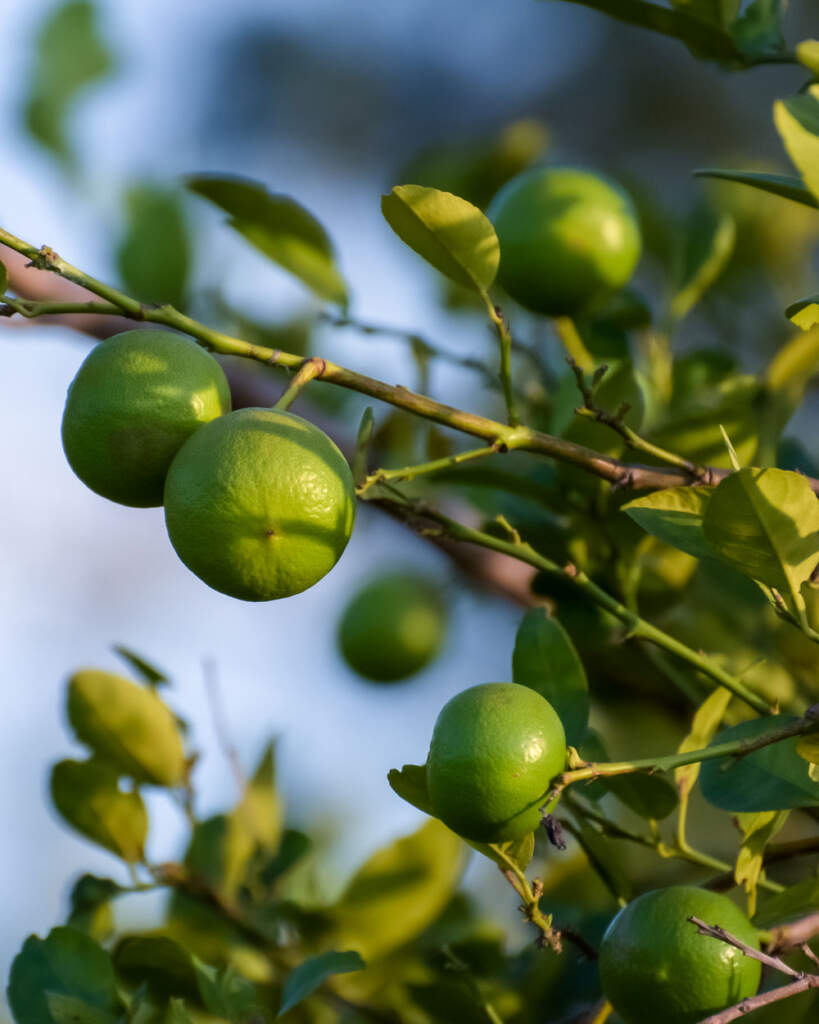
Key Lime Citrus Tree
Key Lime (Citrus aurantiifolia): Key lime trees are smaller in stature and produce small, acidic fruits ideal for culinary uses, such as in pies and beverages.
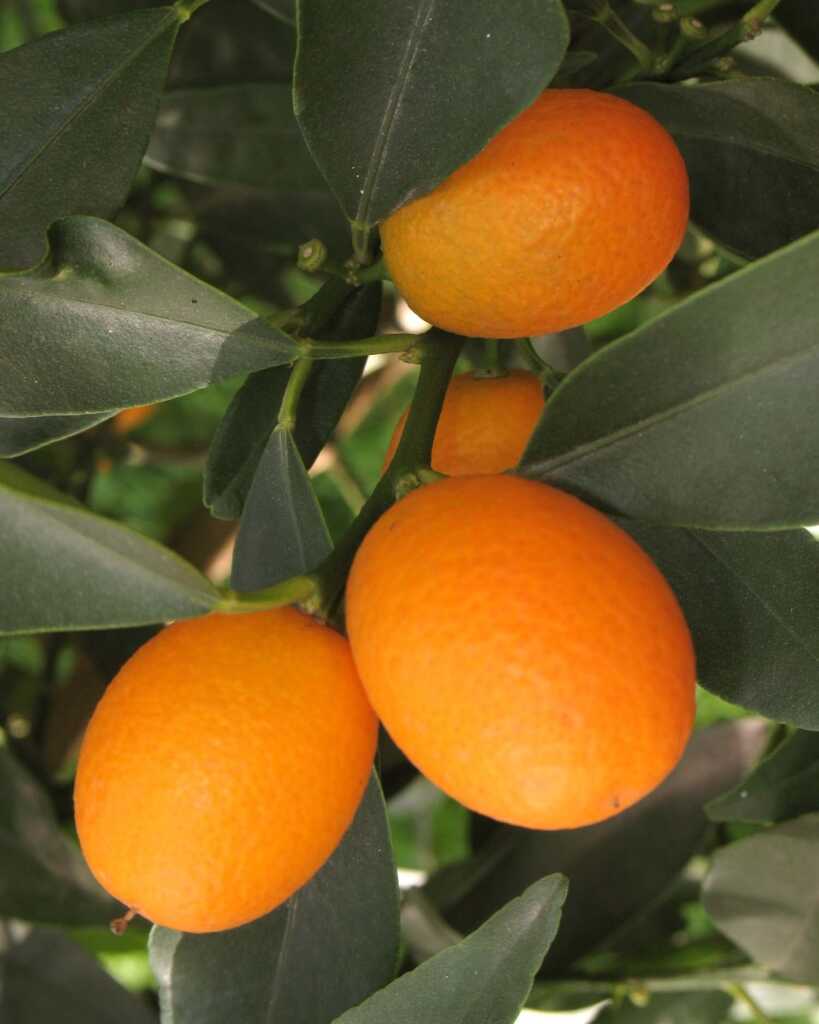
Meiwa Kumquat Tree
Kumquat (Fortunella spp.): Kumquat trees are prized for their small, oval fruits with sweet edible skin and tart flesh. They’re naturally compact and thrive in containers.
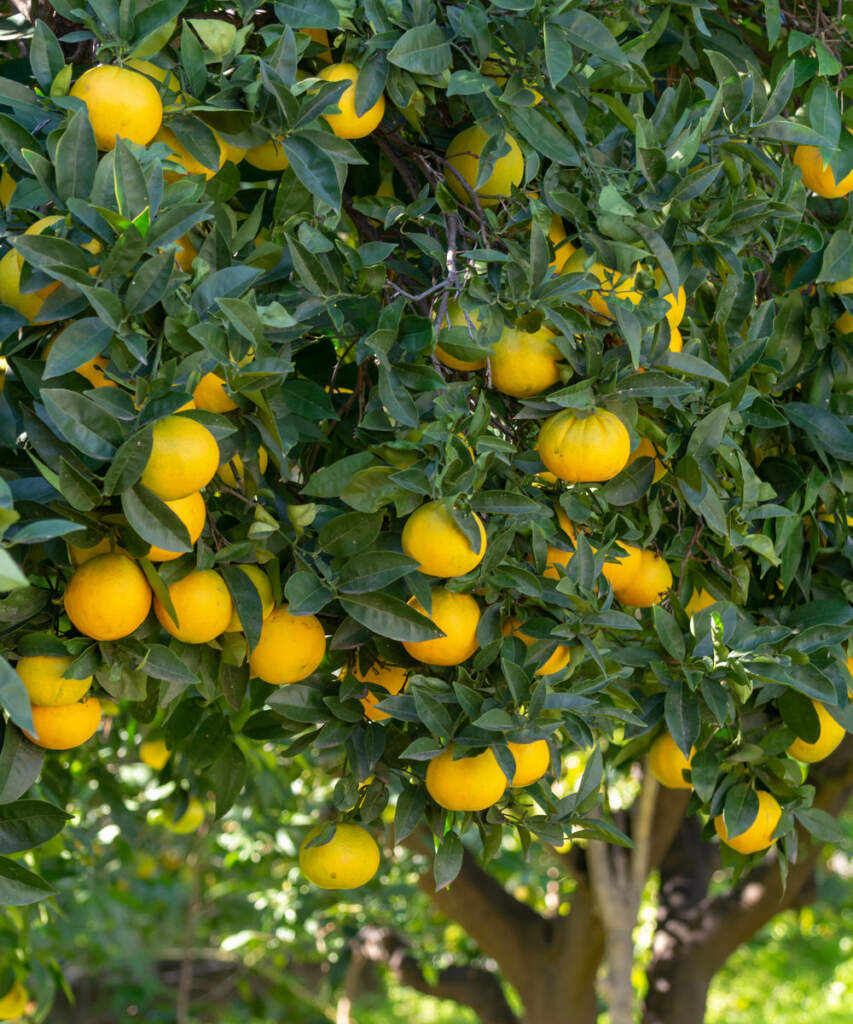
Navel Orange Citrus Tree
Dwarf Citrus Varieties: Many citrus varieties are available in dwarf or semi-dwarf forms, making them excellent choices for container cultivation. Look for dwarf versions of oranges, grapefruits, and tangerines.
Click here to see a full list of Citrus Varieties


